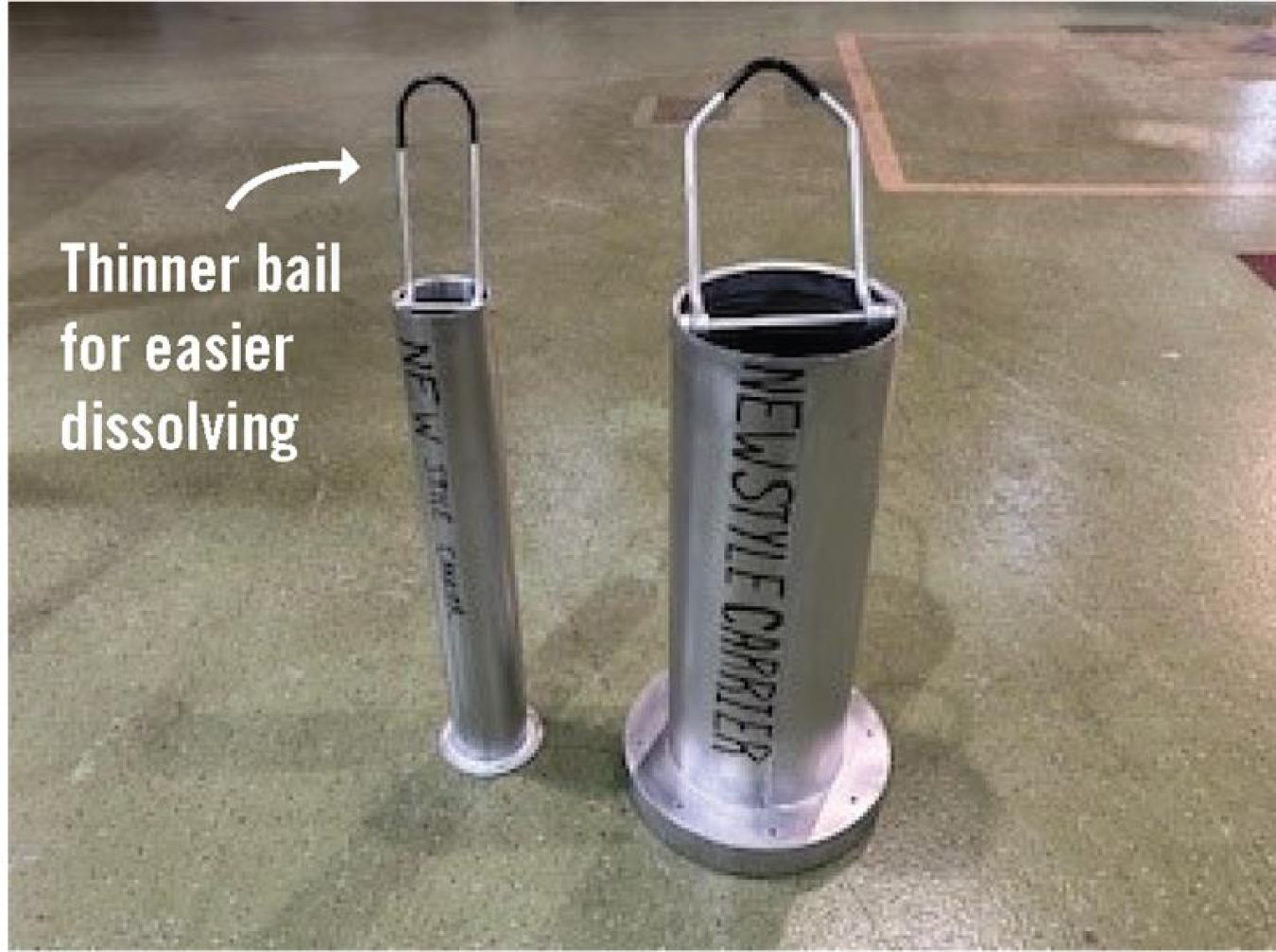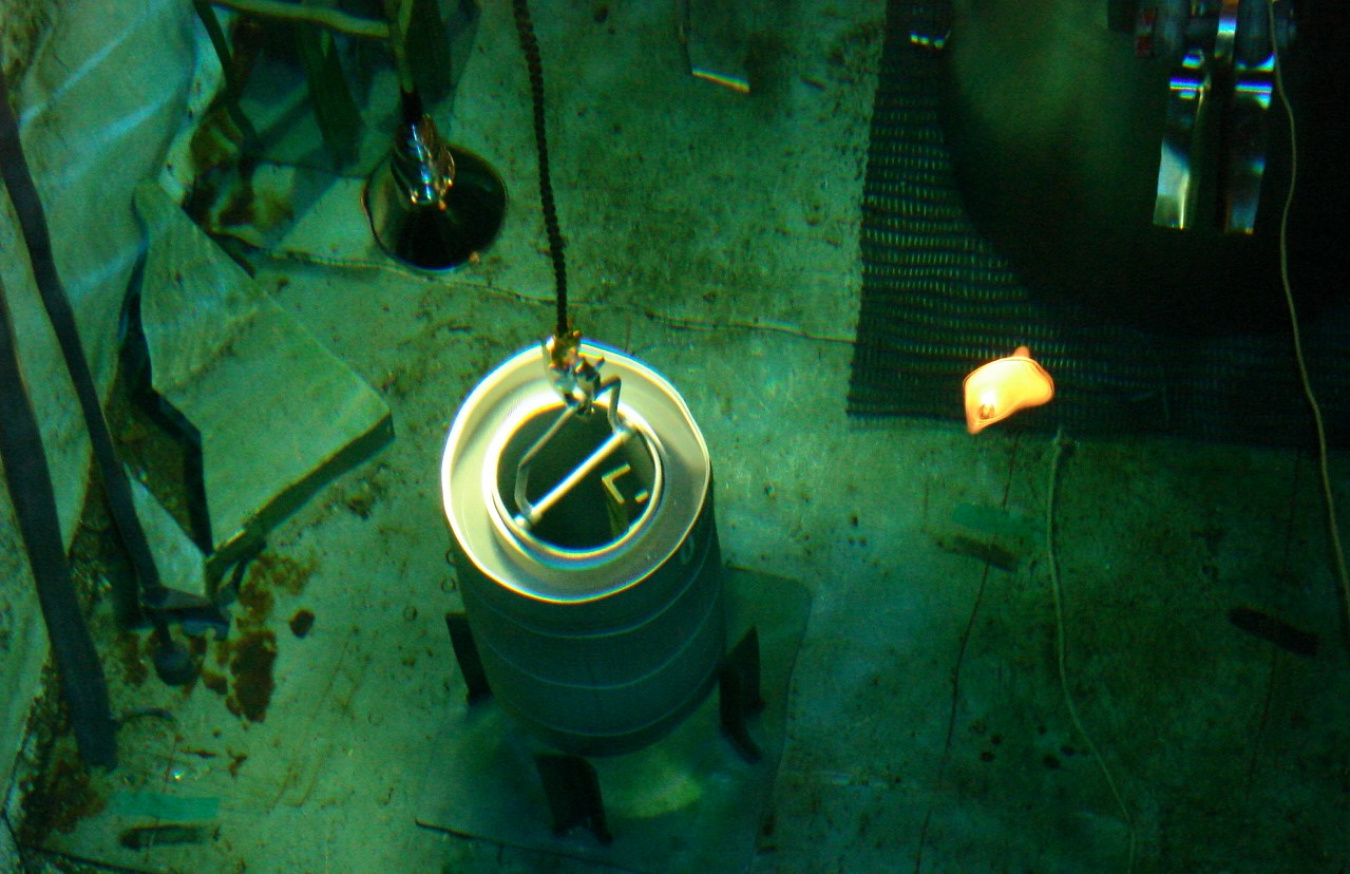Workers at the Savannah River Site have demonstrated their resourcefulness and unique capabilities by implementing a newly created carrier to transport spent nuclear fuel. July 22, 2025
Office of Environmental Management
July 22, 2025A High Flux Isotope Reactor core is lifted in an underwater storage basin at Savannah River Site. The fuel elements, an inner and an outer element, together form a reactor “core.”
AIKEN, S.C. — Workers at the Savannah River Site (SRS) have demonstrated their resourcefulness and unique capabilities by implementing a newly created carrier to transport spent nuclear fuel, reducing the time needed to process the material for permanent disposal in coming years.
Engineers and operators of an underwater basin at SRS where the fuel is stored recently redesigned carriers used to transport and store a special type of the material. The carriers now have a different material alloy, or aluminum, which more easily dissolves, reducing the time needed for fuel disposition in the site’s H Canyon chemical separations facility.
Spent nuclear fuel from the High Flux Isotope Reactor (HFIR) at Oak Ridge National Laboratory in Tennessee is sent to SRS to be processed for eventual disposal. HFIR is the highest flux reactor-based source of neutrons for research in the U.S. using highly enriched uranium.
Under an approach called Accelerated Basin De-inventory, SRS will dissolve the fuel at H Canyon and send it through the site’s liquid waste program to be vitrified and safely stored onsite until a federal repository is identified. This approach will accelerate the disposition of spent nuclear fuel at SRS by more than 20 years and result in savings of more than $4 billion.
As part of that process, the fuel is placed in casks using the specially designed carriers and sent by rail to H Canyon for processing.

The new-style High Flux Isotope Reactor spent nuclear fuel carriers have a slightly thinner bail made of a more easily dissolvable alloy than the previous bail.
HFIR fuel is shaped differently than other types of spent nuclear fuel. The HFIR fuel has the form of a cylindrical core rather than a long tube, or bundle, according to Spent Fuel Project Operations Manager Tristan Downey with U.S. Department of Energy Office of Environmental Management contractor Savannah River Nuclear Solutions (SRNS).
“To use our existing rigging and cranes to remove it from the basin water, the cores are placed on special carriers. The core basically acts as the ring while the carrier is the base that goes through the middle,” Downey said. “The carrier has a bail on top that allows us to pick up the whole unit, transport it underwater to the cask and transfer it to the waiting train cars while maintaining the proper shielding for operators.”
Once the fuel is transferred to H Canyon, operators pick up the fuel from the train car using remote cranes and transfer it to a dissolver for dissolution. Dissolution involves lowering the fuel into a nitric acid solution, which produces a liquid. To ensure all material is dissolved completely, operators use a specialized probe to “feel” for remaining solids.
Operators found that the fuel wasn’t dissolving completely, requiring additional time for the process. Through inspections, they determined this issue was due to the carrier bail — not the fuel itself.
“When the canyon told us what they were experiencing, our engineering team got to work to look at how the carrier was made and find a way to reduce dissolution time,” said Downey. “The end result was changing aluminum alloy used on the part of the carrier that was taking the longest to dissolve to a slightly thinner, more readily dissolvable alloy.”
The team worked with an outside vendor to redesign and construct replacement carriers. The carriers are scheduled for replacement prior to next planned transfer of HFIR fuel to H Canyon.
“Our employees are adept at partnering to find process improvements and solutions to ensure their work is done as safely and efficiently as possible,” said Nick Miller, deputy vice president for SRNS Environmental Operations. “This change allows SRS to better achieve processing goals and supports sustained operations of the HFIR research reactor at Oak Ridge, allowing them to complete crucial nuclear research.”
-Contributor: Lindsey MonBarren
To receive the latest news and updates about the Office of Environmental Management, submit your e-mail address.


